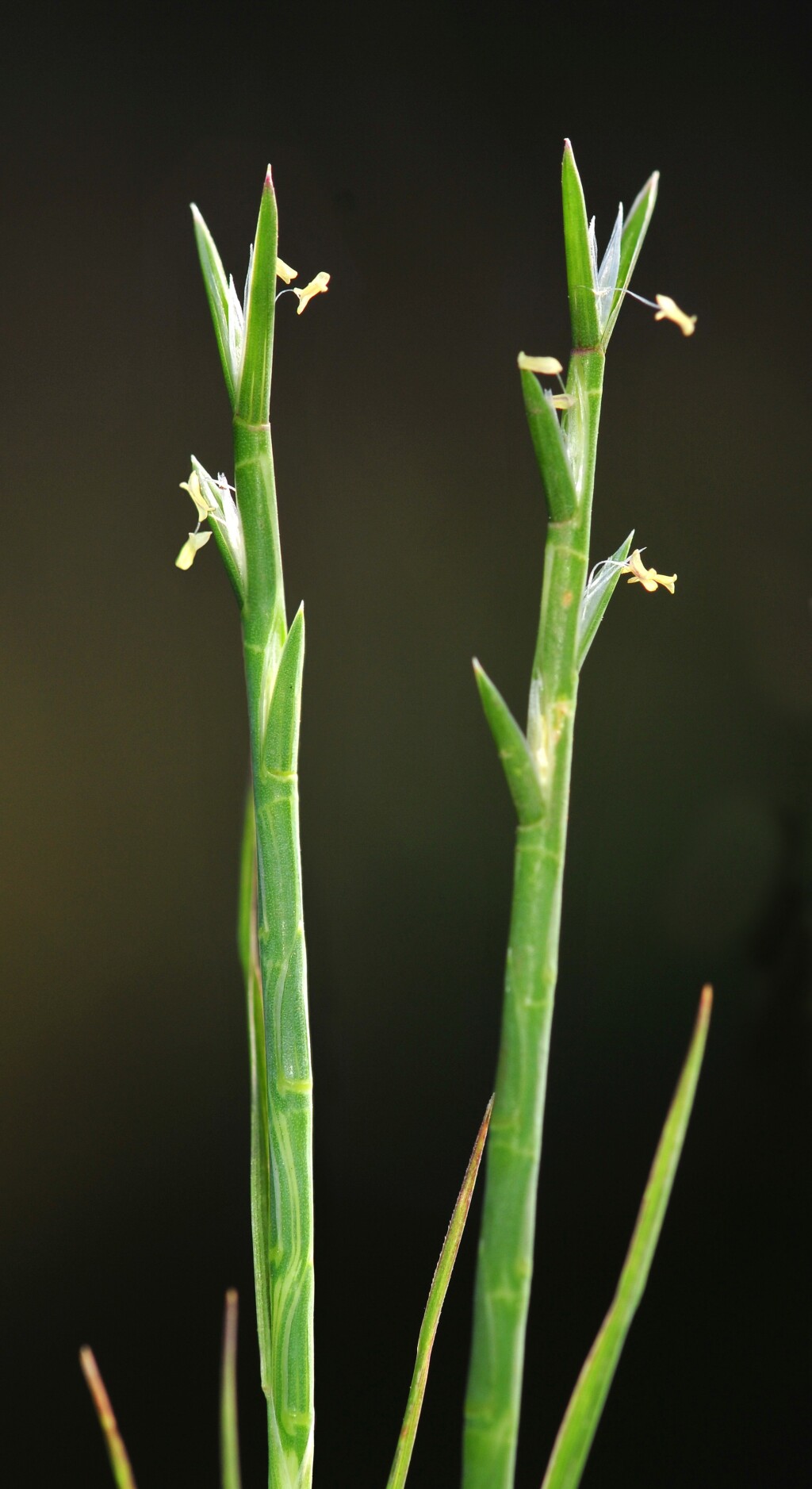Hainardia cylindrica
(Willd.) Greuter Common Barb-grassTufted, erect or ascending, to 40 cm high. Leaves glabrous; blade flat or channelled when fresh, scabrous on upper surface, to 10 cm long and 2.5 mm wide; upper sheath inflated; ligule finely toothed, c. 0.5 mm long. Spikes to 20 cm long, straight and rigidly erect. Glumes 5-nerved, acute, 5–7 mm long, up to twice as long as inter-nerves; glumes of uppermost spikelet subequal and slightly longer than those of lower spikelets; lemma and palea c. 1 mm shorter than glume; anthers 1.5–3.5 mm long. Flowers Oct.–Jan.
LoM, MuM, Wim, GleP, VVP, VRiv, MuF, GipP, OtP, WaP, Gold, CVU, GGr, DunT, NIS, HSF, HNF. Naturalized in all States except NT, Qld, also Britain, southern Africa, the Americas, New Zealand. Indigenous to southern Europe. Occurs on sandy and clay soils in the lowlands, generally associated with saltmarsh or other coastal vegetation (as near Cressy, Breamlea, Lake Connewarre, Altona, Western Port), but occasionally encountered in non-saline areas (Bulla, Mitre Rock, Dartmoor).
Walsh, N.G. (1994). Poaceae. In: Walsh, N.G.; Entwisle, T.J., Flora of Victoria Vol. 2, Ferns and Allied Plants, Conifers and Monocotyledons, pp. 356–627. Inkata Press, Melbourne.
 Spinning
Spinning




